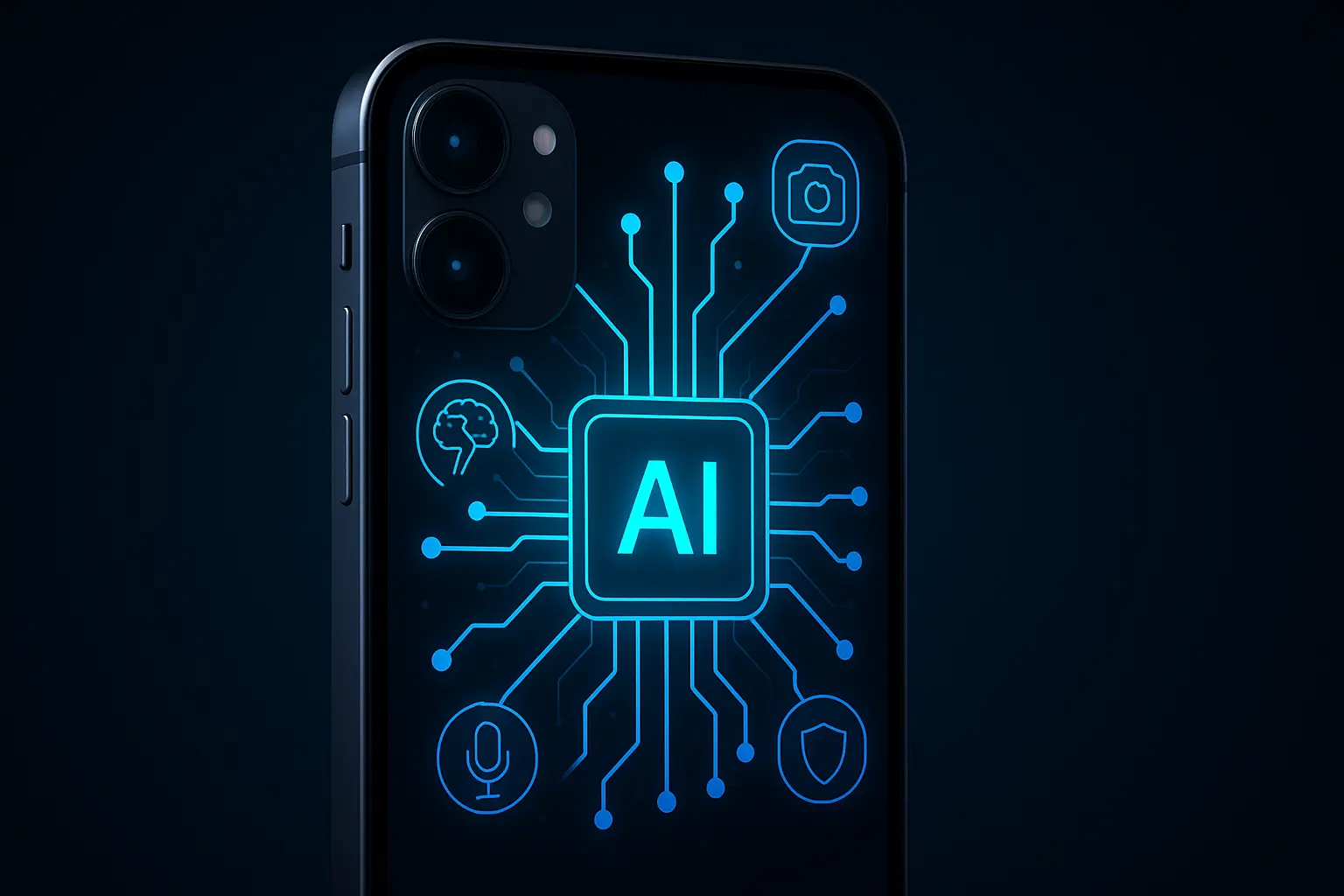How Apple’s New iPhone Chips Enable On-Device AI isn’t just a consumer-tech headline—it’s an employment signal. When advanced silicon like Apple’s latest A-series chips pushes powerful models onto the device itself, it unlocks a wave of new products, privacy-first features, and real-time intelligence. For job seekers, that translates into fresh demand for skills in mobile AI, edge computing, privacy engineering, and monetization—arriving just as macroeconomic noise (government funding standoffs, stop-start data releases, shifting rate expectations) makes the job market feel murky. The opportunity is real: on-device AI reduces latency, preserves user data, and enables features that run even in low-connectivity environments—exactly the kind of capability companies can sell and scale quickly.
After months of headlines bouncing between shutdown risks, rate-cut odds, tariffs, and a mixed earnings drumbeat, candidates are asking one question: where is durable growth? Today’s answer points toward the edge—AI that lives on your phone, watch, earbuds, and car dashboard. Below, you’ll find a job-seeker’s playbook to navigate the volatility and lean into the skills, roles, and narratives hiring managers actually prioritize as on-device AI goes mainstream.
- Real-time intelligence at the edge creates revenue lines that don’t depend on constant network calls—think on-device translation, vision, and coaching.
- Privacy-by-default and energy-efficient inference are now competitive moats, so candidates fluent in both product and constraints win interviews.
Even while macro news whipsaws currencies, yields, and quarterly guidance, companies still ship. When consumer platforms upgrade billions of devices—and when chip vendors make private, fast inference the default—product roadmaps shift fast. Hiring follows. That dynamic benefits builders who can instrument models, tailor UX for small contexts, and measure impact without server-heavy analytics.
- Expect AI-enabled features in finance, health, education, and commerce to emphasize offline reliability, battery-savvy design, and rock-solid privacy.
- Roles that connect model capability to user outcomes (PMs, prototypers, growth analysts) get greenlit first because they move metrics quickly.
Where the jobs emerge as on-device AI scales
Product and program roles that translate silicon into user value
Recruiters increasingly want PMs and TPMs who can turn chip-level advantages—secure enclaves, NPU throughput, memory bandwidth—into features users notice on day one. If you can define a roadmap that exploits low-latency inference (instant transcription, object recognition, context-aware suggestions) while fitting within battery and thermal limits, you become the candidate who “gets edge.”
Engineering roles that make models fit—and fly—on phones
Model compression, quantization (e.g., 8-bit/4-bit), pruning, distillation, and on-device caching are bread and butter now. iOS engineers who can bridge Core ML/Metal with Swift, build prediction plugins, and profile workloads with Instruments will find no shortage of briefs. Android equivalents (NNAPI, GPU delegates) ride the same wave—cross-platform fluency is a superpower.
Data, privacy, and evaluation jobs built for edge constraints
No constant firehose of server telemetry? No problem—if you know federated analytics, on-device evaluation, and privacy-preserving metrics. Companies need candidates who can prove impact without vacuuming up personal data. That’s a new analytics culture—and a hiring lane—for people who can design meaningful offline evaluators and safe feedback loops.
Skills you can prove in 30–60 days
Ship a demo that highlights on-device strengths
Spin up an iOS sample showing real-time audio transcription that runs fully offline. Document your tradeoffs: model size, quantization path, memory pressure, and latency at different chunk sizes. Hiring teams love candidates who narrate constraints fluently.
Practice the energy and thermal story
Bring measured numbers to your portfolio: how long your feature runs before thermal throttling, battery delta per minute, FPS under sustained load. Add a short readme interpreting the data like a product decision-maker.
Design for privacy as a product feature
Pitch the same feature two ways—cloud and on-device—then write a short memo explaining why on-device wins for speed, reliability, and trust. Include a risk register and a simple DPIA-style checklist. Product + privacy is a rare and valuable combo.
On-Device AI: A Career Game-Changer
Apple’s new iPhone chips are unlocking the power of on-device AI, reshaping how industries and professionals work. Employers can seize this moment by hiring forward-thinking talent ready to innovate with AI. Post your job on WhatJobs today and connect with professionals prepared to lead the next tech revolution.
Post a Job Free for 30 Days →Resumes that resonate with edge-AI hiring managers
Lead with measurable, device-first outcomes
Replace “worked on an AI feature” with:
- “Reduced on-device inference latency from 120ms → 45ms (A-series NPU), lifting task completion +14%.”
- “Compressed model from 350MB → 80MB via quantization/distillation, enabling offline mode and +9 NPS in low-connectivity regions.”
Translate silicon to value in bullets
Show you understand why hardware matters: secure enclave ⇒ zero-trust credentials; NPU throughput ⇒ live, frame-by-frame moderation; memory bandwidth ⇒ larger local context windows. Each bullet should tie a hardware capability to a user metric or cost metric.
Interview stories that close offers
The “constraint whisperer” narrative
Walk through a time you downgraded model size to preserve battery—and still improved outcomes. Frame it as a product win: more sessions completed, higher retention, fewer crashes. Edge is a game of intelligent tradeoffs; be the person who plays it well.
The privacy-as-growth narrative
Tell a story about earning user trust with on-device inference—fewer permissions, no data uploads, clearer messaging—and how that unlocked marketing claims and conversion rates. In regulated spaces (health, finance), this is gold.
Practical learning plan—fast and focused
Weeks 1–2: Foundations and tooling
Set up a Core ML/Metal playground (or Android NNAPI) and convert a lightweight model. Profile CPU/GPU/NPU usage, measure latency, and write a short technical note connecting measurements to user impact.
Weeks 3–4: Shipping UX that proves value
Build a tiny, delightful feature that only works locally—e.g., an offline study coach that summarizes your screenshots, or a real-time accessibility aid for captions. Add a “Why it’s on-device” explainer in-app.
Weeks 5–6: Privacy and analytics without the firehose
Implement local evals (precision/recall on-device test sets), federated-ish counters (aggregated differentially private stats), and an experiments doc showing how you’d roll out changes safely without uploading raw user data.
Market turbulence ≠ career turbulence
Use macro to strengthen your pitch
Hiring teams care about resilience. Tie on-device AI to cost stability (fewer server calls), regulatory safety (local processing), and feature velocity (no network dependency). Whether rates cut sooner or later, that efficiency story lands.
Cross-functional signal still beats everything
The best offers go to candidates who can dialog with chip folks, infra folks, and designers—and translate that into roadmaps. Edge AI magnifies the value of “bilingual” talent: product + platform, privacy + growth, model + UX.
Quick-win checklist before you apply
- Portfolio demo: an offline AI feature with clear metrics and a short video walkthrough.
- Readme: latency, battery, thermal results explained in plain product language.
- One-pager: “Cloud vs On-Device: Why we ship local,” including privacy, cost, and UX.
- Resume bullets that map silicon capability → user or business outcomes.
- A brief post on LinkedIn/Medium summarizing your lessons—signal your expertise.
Live example (user POV)
I built a Swift demo that captions short videos entirely on-device. I distilled a 300MB model to 95MB using 8-bit quantization, cut median latency from 180ms to 60ms with NPU acceleration, and limited battery drain to ~2% per 10 minutes. In a small beta (20 users), completion rate for “caption and post” rose from 63% to 77%, and support tickets about “slow uploads” disappeared because nothing went to the cloud. I documented the privacy story in-app (“processed on your iPhone, never uploaded”), which increased first-session conversion by 11%. That package—demo, metrics, and privacy narrative—landed me three final-rounds for Mobile AI PM and iOS roles.




